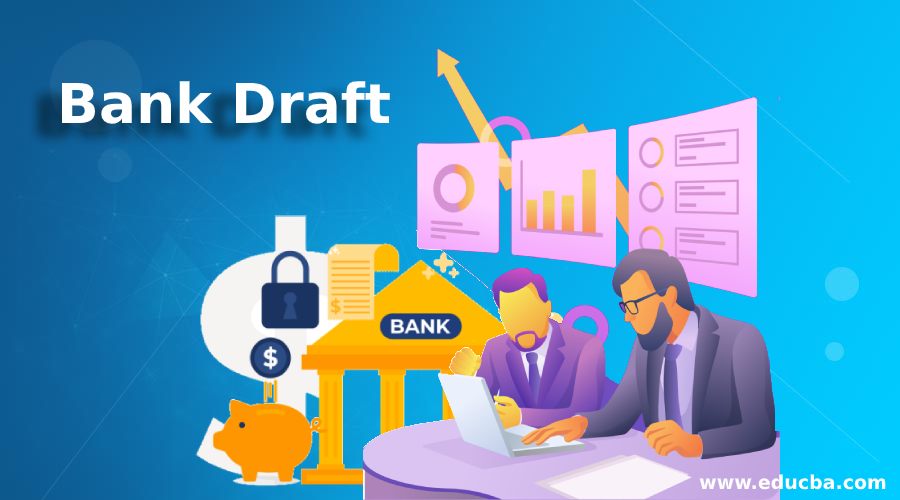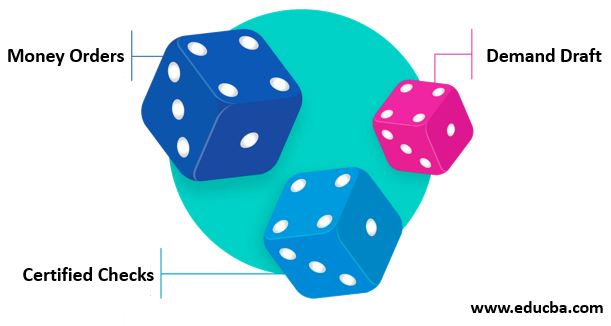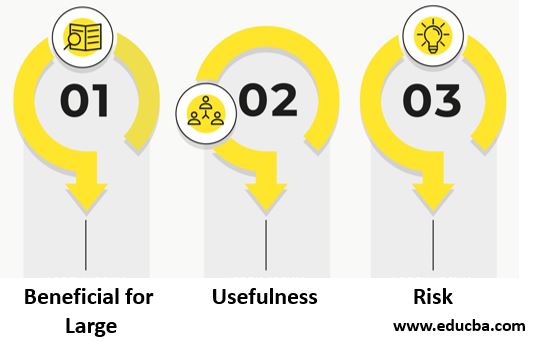Definition of Bank Draft
A bank draft can define as a negotiable instrument similar to bills of exchange, usually a payment cheque where issuing bank or another of its branch processes payment on behalf of their client (drawer) to the drawee’s A/c where drawer had already deposited equivalent funds in issuing bank A/c along with the applicable charges payable.
It is also called a banker’s draft or teller’s cheque. It is issued to a customer for remittance purposes. The drawer needs to immediately transfer in an advance amount that he has requested to pay. It is drawn on the bank itself, signed by an employee of the bank on behalf of the bank as a drawer, and provides to the bank’s customer for remittance purposes. Usually, like any other negotiable instrument, Bank Draft cannot transfer in favor of any other person, i.e., it will become payable only in the A/c of an entity whose name is mentioned as drawee initially.
Characteristics of Bank Draft
Following are the basic characteristics are given below:
- The amount of money payable by the bank draft remains certain.
- It is drawn by one branch of a bank on another branch of the same bank, or sometimes it can also be drawn by another.
- The Payee of the draft must be certain. According to section 85A of the negotiable instrument act 1881, it should be payable to order on demand and not to the bearer.
- Like other negotiable instruments, it is also an unconditional instrument with an order to pay.
- Easily accessible as any person can get a bank draft issued by depositing money in the bank.
- Banks usually charge a commission for issuing the draft.
How Does It Work?
The Bank Draft cycle right from start to end is very simple. An individual who obtains a bank draft needs to head toward a bank. As per instructions bank will withdraw money from the individual account and transfer the same to the account of a bank’s name. The bank draft will issue as per the customer’s directions regarding the amount, payee details, etc. The name and amount of an individual (Payee) will appear on the document. This draft can also use in foreign countries to close a transaction or process payment. It can prepare in the currency of one’s choice.
Once a bank issues it, the customer will forward it to the payee. The payee will further deposit the same in its bank A/c. Once after depositing bank draft amount will transfer to the payee’s a/c. If, due to any reason, a bank draft has been lost, stolen, or destroyed, it can cancel or replace as long as the individual purchasing the draft has the required document.
Examples of Bank Draft
Some commonly used examples are:
- Demand Draft
- Certified Cheque
- Money Orders
Practical example: Usually, government organizations require payment to make via bank payment instruments like Demand Draft, certified cheques, etc. Suppose a company needs to process annual statutory payments like motor vehicle tax. The company will reach its bank, transfer the equivalent amount to the bank and get a demand draft issued in favor of the government agency.
Types of Bank Draft
There are three types of the draft:
- Money Orders: In this type of bank draft, a specified amount of money is transfers from one place to another. The banks issue this on behalf of their customers. It is a financial instrument where the bank is responsible for remitting the amount when the order is present before them.
- Certified Checks: It is a typical type of banker’s cheque in which money is transfer to the recipient’s bank a/c via a bank for which the bank charges a commission. It is the easiest method of money transfer.
- Demand Draft: It is a type of bank draft where the payer and the recipient are not in the same place. The receiver receives the money once the draft is deposited. In this method, day to day financial transactions go on.
Bank Draft vs Cheque
The bank customer issues a cheque and is not backed by any bank guarantee for honoring payment( i.e., chances of the cheque getting bounced due to varied reasons). Whereas Bank Drafts are issued and guaranteed by the bank, as in this case, the amount is pre-deposited by the customer. An individual uses a cheque to settle the transactions, and the person who makes the payment and rights the cheque is the drawer of the cheque, and the person who receives the cheque and obtains funds from it is the payee. The bank issues it at the request of the bank customer to make large payments.
It does not require a signature; however, a bank official must sign a certified bank draft to make it more secure and fraud-proof. A cheque is a negotiable instrument that can further endorse in favor of another person, but a Bank draft cannot be further endorsed and credited only to the payee’s bank A/c.
Advantages
Below are some advantages are:
- Beneficial for Large Transactions: It is useful in case of large transactions such as purchasing of house, car, or any valuable items. It is a guaranteed payment tool and can be drawn for much of the sum. Hence it is beneficial for the parties to process many transactions.
- Usefulness: It is easy to use and has a high value in the market to settle transactions.
- Authenticity: Highly authenticated tool as it is non-transferable without required formalities. There is the least chance for forgeries in bank drafts as the bank issues it once all the formalities are fulfilled.
- Risk: This type of draft involves a negligible amount of risk. Security measures are well established as compared to other means of financial tools.
Disadvantages
Below are some disadvantages are:
- Time-Consuming: The process is time-consuming as the draft can be taken through banks only. An individual has to visit the bank and collect the draft personally. Similarly, the receiver has to present the draft before the bank for remittance.
- Cost: Additional charges and commission of the bank are charged based on the amount to be transferred. The different bank has different charges depending upon the number/ value of drafts to be made.
- Deadline: Bank has a proper time limit to present the draft before it; if the drafts are older than the prescribed limit, the bank may refuse the remittance, and the refund process also takes time.
Conclusion
It is one of the payment mechanisms generally used in processing various government and educational institutions related payments. It is important for the security measures involved in it as it is authenticated and has the least risk factor. But as it is not a liquid asset, it has some formalities that make it a bit cumbersome. However, with the philosophy of digitalization, online transactions are becoming popular nowadays.
Recommended Articles
This is a guide to Bank Draft. Here we also discuss the definition and how bank draft work. Along with advantages and disadvantages. You may also have a look at the following articles to learn more –





